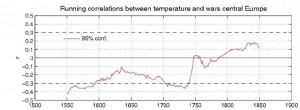- South Africans produce virus-resistant cassava.
- Success stories in agricultural development documented. Some agrobiodiversity in there.
- Fisheries and food security. And more. And more: why not eat “weedy”fish?
- A crop modeler speaks.
- African agriculture is on youtube, but just barely.
- Forage grasses for beginners. Straight from the grazier’s mouth.
Nibbles: Apples, Rangeland degradation
- Woman discovers marketable new apple. Good news.
- Mongolian blogger thinks rangeland sustainability “projects should do more work in people’s mind than on the rangeland.”
Crop wild relative helps Kew reach 10% milestone
Kew Gardens’ Millennium Seed Bank has reached its target of collecting 10% of the world’s wild plants, with seeds of a pink banana among its latest entries.
Congratulations, and happy birthday Kew! Interestingly, the wild banana in question, Musa itinerans, is also found in a genebank in Thailand, apparently as a breeder’s line, so it may well be useful in crop improvement.
LATER: Ok, this is why I talk 1 about genebank database hell. Musa itinerans is in the Musa Germplasm Information System, fourteen accessions of it, 2 conserved in vitro at the International Transit Centre, and in China and the Philippines. But it seems it is not in SINGER, for some reason, which is where I first looked for it. And neither of these two sources seem to have made it to WIEWS.
LATER STILL: And 3 specimens in botanic gardens. GBIF disappointing, only a couple of MoBo sheets. Literature suggests it might be a source of cold resistance, and maybe disease resistance too.
Too hot to fight
A short piece in the latest Economist describes a paper in Climate Change on the historical correlation between temperature and war. Up to about 1740-1750 colder years were also more warlike years, at least in Europe (the authors quote a paper that suggests there’s a similar correlation for China). This correlation is never particularly strong, though it is occasionally statistically significant, but then it breaks down entirely and shoots up into very slightly positive (though non-significant) territory.

Dr Tol and Dr Wagner suggest that in the more remote past the effects of cold weather on harvests led to supply shortages, and that these increased the likelihood of people fighting over food and the land needed to produce it. They argue that the reason the relationship between warfare and cold vanishes in the mid-18th century is that this is the moment when the industrial revolution began. Both agriculture and transport improved rapidly at this time. Systematic plant breeding, the introduction of new crops and new forms of crop rotation, and better irrigation increased the food supply. Improvements in roads and the large-scale construction of canals allowed food to be transported from areas of plenty to areas of scarcity.
Does this have implications for the future? Presumably, it implies that we need not worry about war breaking out in Europe due to climate change. Not so fast.
Just because cold, rather than heat, caused problems in Europe during the millennium that Dr Tol and Dr Wagner examined does not mean rising temperatures pose no threat. The lesson, rather, is that the way to minimise the likelihood of climate-induced conflict in the future is to continue the process of crop improvement (for example, by taking advantage of the potential of genetic engineering) so that heat- and drought-tolerant varieties are available; to make farmers aware of these new crops and encourage their use; and to promote free trade and non-agricultural economic development. That way people will have no cause to fight, and tyrants no excuse to stir them up.
There is no correlation in this dataset between precipitation and war, but that’s the one I’d be watching.
Nibbles: Cowpea storage, Expensive Japanese apples, Nutrients in vegetables
- Sometimes breeding better cowpeas is not enough, they need to be bagged properly.
- Sometimes breeding better apples is not enough, they need to be bagged properly.
- Biofortifying brassica through breeding. No bags involved.